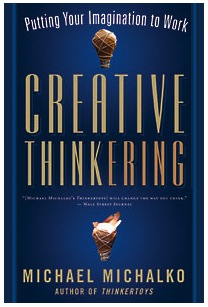The Emerging Strategy of Innovative Service
The world of the customer has dramatically changed. The tough economy has made customers more value conscious, demonstrating far more caution in how they spend their hard-earned dollar. The proliferation of self-service (while a blessing when it works) has made customers more frustrated when they feel trapped in a process with no live person to help. And the Internet, with its social media reach, has empowered customers with strong influence over other customers and the reputation of companies.
Such a plethora of challenges has required all organizations to rethink their strategy. Since revenue from customers and the power of their advocacy dramatically impacts organizational growth and profits, assuming “we know what’s best for our customers” is akin to a death knell.
But, the largest challenge today is not the changing expectations of the new, normal picky, fickle, vocal and wired customer. It is their requirement for an experience that heightens their emotional connection and ramps up their affinity. Customers are bored and want their hearts to race and their spirits to soar. And, here is the backstory.
Hi there! This article is available for free. Login or register as a StrategyDriven Personal Business Advisor Self-Guided Client by:
Subscribing to the Self Guided Program - It's Free!
About the Author
Chip R. Bell is a customer loyalty consultant and the author of several national best-selling books. His last three books include The 9 ½ Principles of Innovative Service, Managers as Mentors (with Marshall Goldsmith) and Wired and Dangerous (with John Patterson). He can be reached at www.chipbell.com


 Michael Feuer co-founded OfficeMax in 1988 starting with one store and $20,000 of his own money, a partner, and a small group of investors. As CEO, he grew it to more than 1,000 stores worldwide with annual sales topping $5 billion. He is also CEO of Max-Ventures, a venture capital and retail consulting firm, and founder and CEO of Max-Wellness, a comprehensive health and wellness retail chain that launched in 2010. After opening initial laboratory test stores in Florida and Ohio, a national roll-out is now underway. To read Michael Feuer’s complete biography,
Michael Feuer co-founded OfficeMax in 1988 starting with one store and $20,000 of his own money, a partner, and a small group of investors. As CEO, he grew it to more than 1,000 stores worldwide with annual sales topping $5 billion. He is also CEO of Max-Ventures, a venture capital and retail consulting firm, and founder and CEO of Max-Wellness, a comprehensive health and wellness retail chain that launched in 2010. After opening initial laboratory test stores in Florida and Ohio, a national roll-out is now underway. To read Michael Feuer’s complete biography,  David Aaker, author of
David Aaker, author of  Pete Maulik is Partner and Chief Operating Officer at innovation consultancy Fahrenheit 212. He is instrumental in the development, evolution and actualization of clients’ innovation efforts. His experience includes leading innovation projects in the alcohol, technology, FMCG, software, beauty, financial services and hospitality categories. Pete is responsible for unleashing the potential of the Fahrenheit 212 organization. This includes finding world-class people, giving them a structure in which they can perform at their peak and ensuring Fahrenheit 212 is delivering transformational innovations on every project.
Pete Maulik is Partner and Chief Operating Officer at innovation consultancy Fahrenheit 212. He is instrumental in the development, evolution and actualization of clients’ innovation efforts. His experience includes leading innovation projects in the alcohol, technology, FMCG, software, beauty, financial services and hospitality categories. Pete is responsible for unleashing the potential of the Fahrenheit 212 organization. This includes finding world-class people, giving them a structure in which they can perform at their peak and ensuring Fahrenheit 212 is delivering transformational innovations on every project.